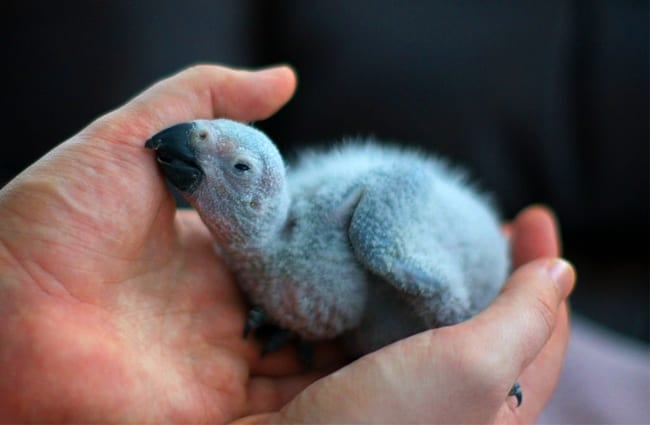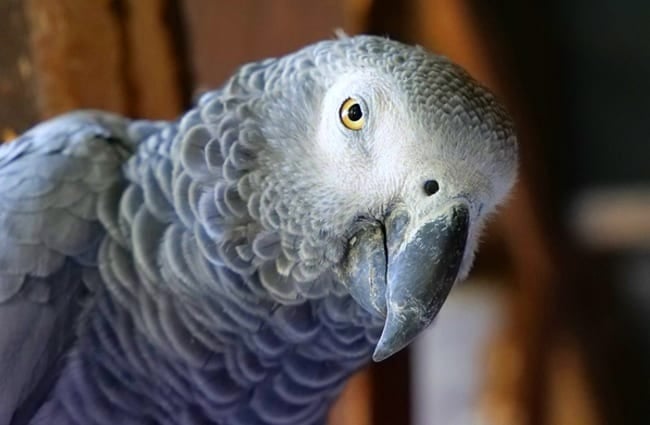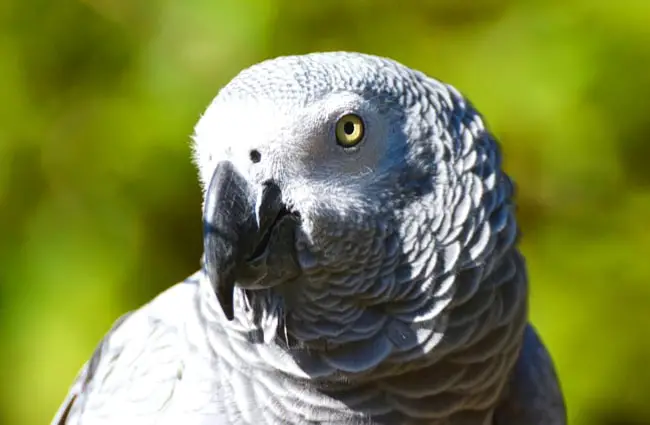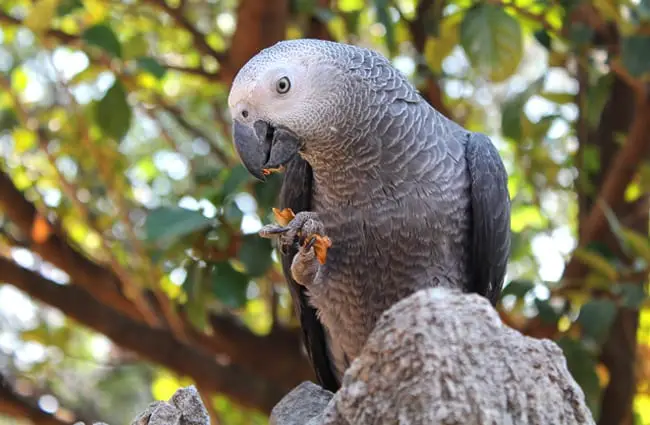Unveiling the Genius of the African Grey Parrot: A Deep Dive into the Avian Einstein
Among the vibrant tapestry of the avian world, one species stands out not just for its striking appearance, but for a mind that has captivated scientists and enthusiasts alike: the African Grey Parrot. Often hailed as the “Einstein of the avian world,” this remarkable bird possesses cognitive abilities that challenge our understanding of animal intelligence, making it a truly fascinating subject for anyone interested in the natural world.
From its intricate social structures in the wild to its astonishing capacity for vocal mimicry and comprehension, the African Grey Parrot offers a window into the complexities of avian life. This comprehensive guide explores every facet of its existence, from its ancient evolutionary roots to its vital role in ecosystems and its often-complicated relationship with humanity.

The African Grey Parrot: A General Overview
The African Grey Parrot, scientifically known as Psittacus erithacus, is a medium-sized parrot found across central and western Africa. It is primarily recognized by its distinctive grey plumage, often described as ash-grey, contrasting sharply with a bright red tail. Two main subspecies are generally recognized:
- Congo African Grey Parrot (Psittacus erithacus erithacus): This is the more common and larger subspecies, characterized by lighter grey feathers, a solid black beak, and a vivid red tail.
- Timneh African Grey Parrot (Psittacus erithacus timneh): Slightly smaller and darker grey, the Timneh Grey has a maroon tail and a horn-colored upper mandible with a black tip.
These birds are renowned for their exceptional intelligence and their unparalleled ability to mimic human speech and a wide array of sounds, often with remarkable contextual understanding. This cognitive prowess has made them subjects of extensive scientific study and highly sought-after companions, though their wild existence is equally, if not more, compelling.

Where to Find Them: Habitat and Geographical Range
For the aspiring zoologist or the adventurous animal lover hoping to spot an African Grey Parrot in its natural environment, understanding its habitat is key. These parrots are native to the equatorial regions of Africa, with their range stretching across a broad band from West Africa to East Africa.
- Preferred Habitats: African Grey Parrots thrive in dense rainforests, forest clearings, forest edges, and savanna woodlands. They particularly favor areas close to rivers and streams, which provide essential water sources and a rich diversity of vegetation. Their presence is often indicative of healthy, biodiverse forest ecosystems.
- Geographical Distribution:
- The Congo African Grey Parrot has a wider distribution, found from southeastern Côte d’Ivoire to western Kenya, Tanzania, and Angola.
- The Timneh African Grey Parrot has a more restricted range, primarily found in the coastal regions of West Africa, from Guinea-Bissau, Sierra Leone, and Liberia to southeastern Côte d’Ivoire.
- How to Find One in the Wild: Locating African Grey Parrots requires patience and a keen ear. They are often found in large flocks, especially at communal roosting sites at dawn and dusk. Listen for their distinctive calls, which can be loud and varied, including whistles, squawks, and even imitations of other forest sounds. Observing them often involves scanning the canopy of tall trees, particularly those bearing fruit or seeds. Early mornings and late afternoons are typically the best times for sightings as they move between feeding grounds and roosts. Remember, ethical wildlife observation means maintaining a respectful distance and minimizing disturbance to their natural behaviors.

The African Grey’s Menu: Diet and Foraging Behavior
In the wild, the African Grey Parrot is primarily a frugivore and granivore, meaning its diet consists mainly of fruits and seeds. However, their foraging habits are quite diverse, reflecting the rich biodiversity of their forest homes.
- Primary Food Sources:
- Seeds and Nuts: A staple of their diet, they possess powerful beaks capable of cracking open tough shells to access nutritious kernels. Palm nuts are a particular favorite, especially from the African oil palm (Elaeis guineensis).
- Fruits: They consume a wide variety of fruits, both ripe and unripe, from numerous tree species. This makes them important seed dispersers within their ecosystem.
- Flowers and Nectar: Occasionally, they will feed on flowers and their nectar, providing an additional source of sugar and nutrients.
- Insects: While not a primary food source, they may supplement their diet with insects, particularly during breeding season when extra protein is beneficial for chick development.
- Foraging Strategy: African Greys are highly intelligent foragers. They often travel in flocks to feeding sites, which can be several miles from their roosting trees. Their keen eyesight helps them spot ripe fruits and seed pods from above. They are adept at manipulating food with their strong feet and beak, carefully extracting the edible parts. This selective feeding behavior, combined with their ability to travel long distances, makes them crucial for seed dispersal, contributing significantly to forest regeneration.

Evolutionary Journey: A Glimpse into the Past
The evolutionary history of the African Grey Parrot, like many avian species, is pieced together through fossil records and genetic analysis. Parrots, in general, are an ancient lineage, with fossil evidence suggesting their presence dating back millions of years. While specific fossils of Psittacus erithacus are rare, genetic studies place them within the Psittacidae family, which originated in Gondwana, the ancient supercontinent that included Africa, South America, Australia, and Antarctica.
The divergence of the African Grey from other parrot species is believed to have occurred as continents drifted apart and ecological niches became specialized. Their remarkable cognitive abilities and vocal learning skills are thought to have evolved as adaptations to complex social structures and foraging challenges within their diverse African habitats. The separation into Congo and Timneh subspecies likely reflects geographical isolation and adaptation to slightly different local environments over long periods.
Social Dynamics and Astonishing Communication
African Grey Parrots are highly social birds, living in large flocks in the wild. This social complexity is a driving force behind their advanced communication skills and intelligence.
- Flock Behavior: They typically roost communally in large groups, sometimes numbering in the thousands, especially in tall trees. During the day, they disperse into smaller foraging parties. This communal living provides safety in numbers against predators and facilitates information exchange about food sources.
- Vocalizations: Beyond their famous mimicry, African Greys have a vast repertoire of natural calls, including alarm calls, contact calls, and calls related to foraging. These vocalizations are crucial for maintaining flock cohesion and conveying vital information.
- Cognitive Abilities: The African Grey Parrot’s intelligence is legendary. Studies, most notably with Alex the parrot, have demonstrated their capacity for:
- Contextual Understanding: They can associate words with objects, colors, and shapes, and use them appropriately.
- Problem-Solving: They exhibit impressive problem-solving skills, such as understanding cause and effect.
- Numerical Concepts: Some have shown an ability to count small quantities.
- Emotional Intelligence: They can form strong bonds and display a range of emotions.
The ability of an African Grey Parrot to not just mimic words, but to use them meaningfully, suggests a level of cognitive processing previously thought to be exclusive to primates. It’s a testament to the diverse paths evolution takes to produce intelligence.

Mating, Reproduction, and Raising the Next Generation
The reproductive cycle of the African Grey Parrot is a fascinating aspect of their wild biology, typically occurring during the dry season or early wet season when food resources are abundant.
- Monogamous Pair Bonds: African Greys form strong, monogamous pair bonds that often last for life. Courtship involves mutual preening, feeding, and elaborate vocal displays.
- Nesting: They are cavity nesters, preferring deep hollows in tall trees, often old palm trees, high above the ground. These sites offer protection from predators and the elements. Both parents participate in preparing the nest cavity.
- Clutch Size and Incubation: A typical clutch consists of 2 to 5 white eggs. The female primarily incubates the eggs for about 28 to 30 days, while the male provides her with food.
- Chick Rearing: Upon hatching, the chicks are altricial, meaning they are born blind, featherless, and completely dependent on their parents. Both parents share the responsibility of feeding the young, regurgitating partially digested food. The chicks fledge, or leave the nest, after approximately 10 to 12 weeks. Even after fledging, the young birds remain with their parents for several weeks or months, learning essential foraging and social skills before becoming independent.
Ecosystem Contributions and Interactions with Other Animals
African Grey Parrots are not just intelligent creatures; they play a vital role in the health and biodiversity of their ecosystems.
- Seed Dispersal: As they consume a wide variety of fruits and seeds, they inadvertently disperse seeds over large areas. Many seeds pass through their digestive system unharmed, germinating in new locations and contributing to forest regeneration and plant diversity. This makes them crucial “gardeners” of the forest.
- Prey Species: In the wild, African Greys are prey for various predators, including raptors like eagles and hawks, as well as arboreal snakes and monkeys that may raid their nests. Their flocking behavior and alarm calls are important defense mechanisms.
- Food Chain Dynamics: By consuming fruits and seeds, they convert plant matter into biomass, which then becomes available to their predators, thus contributing to the overall energy flow within the food web.
- Indicator Species: A healthy population of African Grey Parrots can be an indicator of a healthy, intact forest ecosystem, as they rely on specific tree species for food and nesting.
The Human Connection: Culture, Interaction, and Conservation
The African Grey Parrot’s interaction with humans is complex, marked by admiration, exploitation, and a growing focus on conservation.
- Contribution to Human Culture:
- Symbol of Intelligence: Their remarkable ability to mimic and understand speech has made them symbols of intelligence and communication in various cultures.
- Companionship: For centuries, they have been kept as pets, valued for their engaging personalities and vocal talents. Historical records show them being prized by royalty and explorers.
- Scientific Study: Their cognitive abilities have made them invaluable subjects in avian cognition research, pushing the boundaries of what we understand about animal minds.
- Interaction with Humans:
- Pet Trade: Historically, the demand for African Grey Parrots as pets led to extensive capture from the wild. This has had a devastating impact on wild populations.
- Habitat Loss: Deforestation for agriculture, logging, and human settlement is a major threat, destroying their homes and food sources.
- Conservation Efforts: Due to significant population declines, the African Grey Parrot is now listed as Endangered by the IUCN. In 2016, both subspecies were up-listed to Appendix I of CITES (Convention on International Trade in Endangered Species of Wild Fauna and Flora), which means all international commercial trade in wild-caught African Grey Parrots is prohibited.
- What to Do if You Encounter One in the Wild:
- Observe from a Distance: If you are fortunate enough to encounter an African Grey Parrot in its natural habitat, maintain a respectful distance. Use binoculars for a closer look.
- Do Not Disturb: Avoid making loud noises, sudden movements, or attempting to approach or feed the birds. Your goal is to be an unobtrusive observer.
- Appreciate Their Wildness: Remember that these are wild animals. Their beauty and intelligence are best appreciated when they are allowed to behave naturally, undisturbed by human presence.
- Report Sightings (if applicable): In some regions, conservation organizations may be interested in sighting data to monitor populations.
Caring for African Grey Parrots in Captivity: A Zookeeper’s Guide
Caring for an African Grey Parrot in a captive environment, such as a zoo, requires a deep understanding of their complex needs, mirroring their wild behaviors as much as possible.
- Essential Tasks for Zookeepers:
- Dietary Management: Provide a varied diet consisting of high-quality parrot pellets, fresh fruits (e.g., apples, berries, melon), vegetables (e.g., leafy greens, carrots, bell peppers), and occasional nuts (e.g., almonds, walnuts in moderation). Avoid avocado, chocolate, and caffeine, which are toxic.
- Environmental Enrichment: This is paramount for their mental and physical well-being.
- Foraging Toys: Provide puzzle feeders and toys that require manipulation to extract food, mimicking natural foraging.
- Chew Toys: Offer safe, non-toxic wood, ropes, and natural branches for chewing to keep their beaks healthy and prevent boredom.
- Social Interaction: African Greys are highly social. If housed individually, daily human interaction, training sessions, and verbal engagement are crucial. If housed in pairs or groups, ensure adequate space and monitor social dynamics.
- Perches: Offer a variety of perch sizes and textures (natural branches are ideal) to promote foot health.
- Housing: Provide a spacious enclosure that allows for flight and exercise. The cage should be made of durable, non-toxic materials with appropriate bar spacing.
- Hygiene: Regular cleaning of the enclosure, food, and water dishes is essential to prevent disease. Provide opportunities for bathing, such as a shallow dish of water or misting.
- Veterinary Care: Schedule regular check-ups with an avian veterinarian. Be vigilant for signs of illness, such as changes in appetite, feather condition, or behavior.
- Mental Stimulation: Engage them with new challenges, teach them new words or sounds, and provide opportunities for problem-solving. Their intelligence demands constant stimulation.
- What to Avoid:
- Isolation: Prolonged periods of solitude can lead to behavioral issues like feather plucking, aggression, and depression.
- Monotonous Environment: A lack of enrichment will result in boredom and stress.
- Inconsistent Routine: While flexibility is good, a predictable daily routine for feeding, interaction, and sleep can reduce stress.
- Poor Diet: An all-seed diet is severely lacking in nutrients and can lead to health problems.
- Harsh Chemicals: Avoid using strong cleaning agents or air fresheners near their enclosure, as their respiratory systems are sensitive.
- Punishment: African Greys respond best to positive reinforcement and gentle handling.
A Huge List of Interesting Facts About African Grey Parrots
- African Grey Parrots can live for 40 to 60 years in captivity, and around 23 years in the wild, making them long-lived companions.
- They are known to mimic not just words, but also household sounds like ringing phones, dripping water, and even the voices of different family members.
- Studies suggest they can understand abstract concepts like “same” and “different,” and even zero.
- Their vocal cords are not like ours; they produce sounds using a specialized organ called the syrinx.
- African Greys are highly sensitive to their environment and can be prone to stress, which may manifest as feather plucking.
- They have zygodactyl feet, meaning two toes point forward and two point backward, which is excellent for gripping branches and manipulating food.
- Their powerful beaks are not just for cracking nuts; they are also used for climbing and as a third limb.
- Wild African Greys often travel many miles each day between their roosting sites and feeding grounds.
- The Timneh African Grey is generally considered to be able to speak earlier than the Congo African Grey, though individual variation exists.
- They possess excellent eyesight, crucial for navigating dense forests and spotting food.
- In some parts of their range, local communities have traditionally viewed them as sacred or as messengers.
- The red tail feathers of the Congo African Grey are highly prized and were historically used in ceremonial garments.
- They are highly intelligent and can become bored easily, requiring constant mental stimulation.
- Their ability to form strong social bonds extends to humans, often bonding deeply with their primary caregiver.
The Enduring Legacy of the African Grey Parrot
The African Grey Parrot is more than just a bird; it is a marvel of evolution, a testament to the incredible diversity of intelligence found in the natural world. From its vital role in maintaining the health of African rainforests to its profound impact on our understanding of animal cognition, this species continues to inspire awe and curiosity.
As we continue to learn more about these extraordinary birds, the responsibility to protect them grows. Their future, both in the wild and in human care, depends on informed conservation efforts, ethical practices, and a deep appreciation for their unique place in the global ecosystem. By understanding and respecting the African Grey Parrot, we not only safeguard a species but also enrich our own understanding of life’s boundless possibilities.

![Red Angus Closeup of a beautiful Red Angus cowPhoto by: U.S. Department of Agriculture [pubic domain]https://creativecommons.org/licenses/by/2.0/](https://animals.net/wp-content/uploads/2020/03/Red-Angus-4-238x178.jpg)




![Red Angus Closeup of a beautiful Red Angus cowPhoto by: U.S. Department of Agriculture [pubic domain]https://creativecommons.org/licenses/by/2.0/](https://animals.net/wp-content/uploads/2020/03/Red-Angus-4-100x75.jpg)

